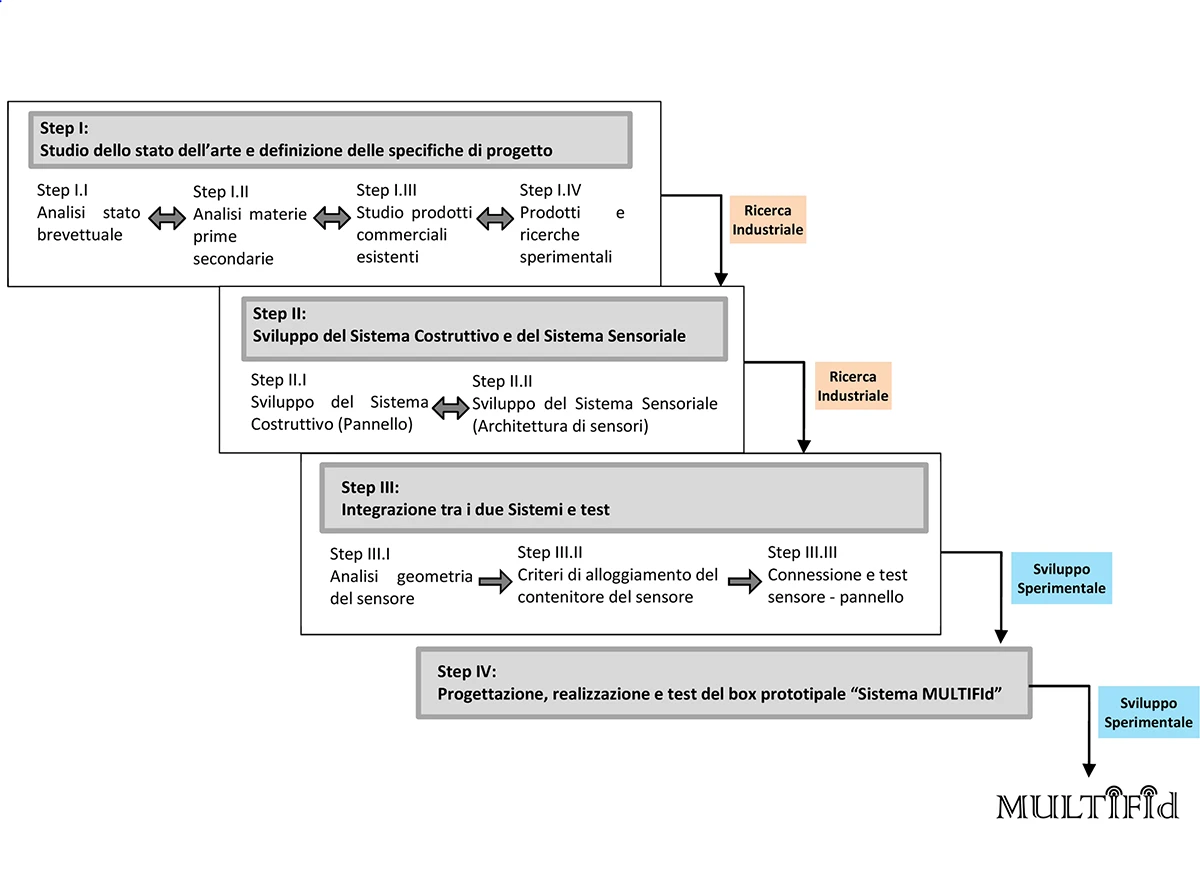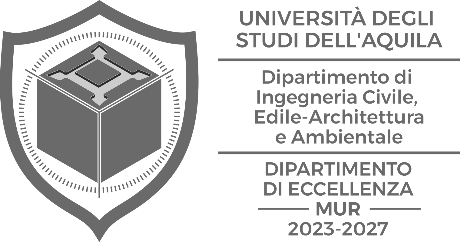multifid
purpose and methodology
The main goal of the MULTIFId project is to create an innovative product that consists of an intelligent, economical and low-emission panel, made with waste from paper and cardboard industrial manufacturing (Rotilio and De Berardinis, 2020).
A passive communication system is integrated inside the panel which uses RFID technology to satisfy different needs. In particular, the main functions that it is expected to perform are the monitoring of the position of workers in order to ensure safety in risk areas, the thermal improvement of the building envelope in which the panel will be installed and the monitoring of the humidity conditions of the panel. The first two innovative functions fulfil specific needs within the “Smart Factory” programme that is cited in the national reference area of “Smart and sustainable industry, energy and environment”. In detail, MULTIFId intends to contribute to the development of the fundamental enabling technology of “Advanced Materials”. In the end, the third function allows the main criticality of the material which forms the panel to be overcome through constant monitoring.
The project provides for the construction of two typologies of panels, respectively named “A” and “B”. The first typology uses paper pulp properly treated in order to make it suitable for 3D printing; on the other hand, the second one uses single layers of corrugated cardboard arranged in several layers. The analysis of the state of the art has highlighted that in construction there are already products based on paper and cardboard. For instance, they are used in the structural field for the construction of formwork, in the mix of concrete for lightening purposes, for the construction of parts in some building elements and for acoustic and thermal insulation. In this last field of interest for the MULTIFId goals, the products available on the market are divided into two main areas: one of “loose” materials used as filling, and one of mats or panels based on cellulose flakes mixed with supporting fibres.
There are also experimental studies, as well as a patent, concerning the use of paper and cardboard panels and components in construction, Asdrubali et al. (2016), Distefano et al. (2018), but, factually, no product is able to perform the functions defined in the research project dealt with in this paper. According to what is argued, it is clear that MULTIFId is a highly innovative product due to the integration between the sensory system and its supporting architecture, i.e. the panel (Fig. 1). The methodological approach consists of four main phases: the study of the state of the art aimed at defining the project specifications; the development of the two systems, constructive and sensory; their integration, thanks to tests and verifications; the design and construction of a prototype box of the “MULTIFId System”. Since the project is based on processes with a mainly experimental nature, it is obvious that the methodological approach is based on an iterative procedure with implementation and continuous improvement of results.
Nowadays, the methodological process described has been fully developed.
Figura 01 |
Schema concettuale. In alto definizione del sistema sensoriale, di quello costruttivo e progettazione dell’integrazione tra i due. In basso installazione del pannello nella Fabbrica Intelligente per il conseguimento degli obiettivi di progetto




